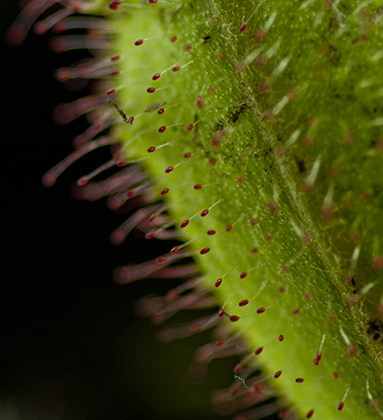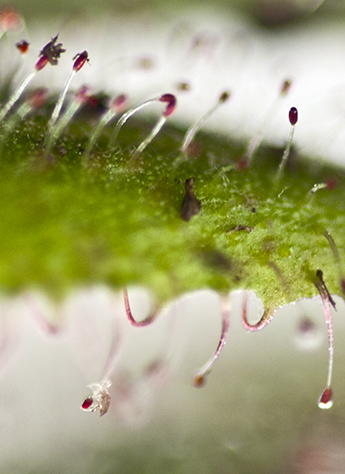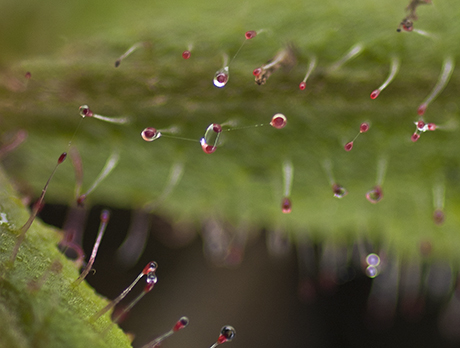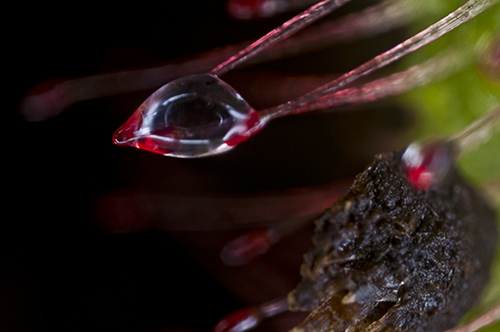Sundews (Drosera)
 Drosera, or more commonly known as sundews, are one of the largest genera of carnivorous plants; with at least 152 species (Some sources say 194 species). Various species of Drosera can be found growing indigenously on every continent except Antarctica. Sundews are named in reference to the drops on the glandular hairs that glisten like dew in the sun (botanical name, derived from Greek: drosos = dew or dewdrops; English name derived from Latin: ros solis = dew of the sun). Sundews are perennial and commonly grow in moist or wet environments with acidic soils and high levels of sunlight. Some habitats include bogs, fens, swamps, marshes, moist steam banks, tepuis (mesas found in Venezuela), fynbos (shrub land of South Africa) and wallums (coastal ecosystem of Australia).
Drosera, or more commonly known as sundews, are one of the largest genera of carnivorous plants; with at least 152 species (Some sources say 194 species). Various species of Drosera can be found growing indigenously on every continent except Antarctica. Sundews are named in reference to the drops on the glandular hairs that glisten like dew in the sun (botanical name, derived from Greek: drosos = dew or dewdrops; English name derived from Latin: ros solis = dew of the sun). Sundews are perennial and commonly grow in moist or wet environments with acidic soils and high levels of sunlight. Some habitats include bogs, fens, swamps, marshes, moist steam banks, tepuis (mesas found in Venezuela), fynbos (shrub land of South Africa) and wallums (coastal ecosystem of Australia).
Trapping Mechanism
Sundews are characterized by their glandular hair topped with the dew like secretions; the hairs are stalked glands that produce digestive juices that decompose the trapped prey. The sundew relies on trapping its prey with its sticky hairs before it rolls up the edges of the leaf. The stalked glands secrete sweet mucilage to attract and trap its prey. The prey dies through exhaustion or asphyxiation as the leaf rolls in and the mucilage envelops and clogs the prey. Death usually occurs within 45 minutes. The digestive enzymes: protease, phosphatase, peroxidase, and esterase, increase in production once prey has been captured. The enzymes decompose the prey and free the contained nutrients from the prey. The nutrients are absorbed through the leaf surface and fuels plant growth.


